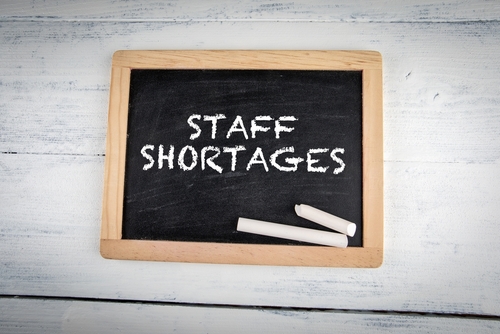According to Dr. Amber Kool, DNP, RN, Associate Provost for Arizona College of Nursing, it’s going to be a long process to solve the nursing crisis. As of August 2022, the Nurse Journal reports that the main factors contributing to the shortage are a high nurse turnover rate, senior nurses approaching retirement age, an increase in the demand for care of the aging population, and a lack of educators and faculty in the field.
In addition, Dr. Kool notes that nursing school enrollment is not keeping pace with the demand for new nurses, even with high interest in the profession.
“Many qualified applicants are not admitted,” she explained. “There needs to be more open slots in nursing programs to educate the next generation. This has been something that has been building for more than twenty years. But I am hopeful that there will be a neutralizing result in 2024 with the nursing shortage. Those in the workforce are less likely to leave at this point, and I believe that is stabilizing. However, we have work to do to balance patient loads and improve nurses’ workload while on shift.
“I believe the pandemic resulted in an influx of individuals seeking a profession in nursing as they saw this as an opportunity to make a difference and help others,” she continued. “We still need to provide more education opportunities for those who want to enter nursing, as education is a sector that has yet to fully recover from the pandemic.”
In this Q&A, Dr. Kool discusses how organizations can resolve this, how certain demographics are handling the shortage, and more.
What ways can organizations resolve this?
AK: Hospitals and nursing programs must come together to support one another. Partnerships that increase the ratio of students for clinical experiences, dedicated education units, preceptor models, internships, and externships are just a few strategies we can put in place now that will positively impact the number of nurses in the future.
We also need to be creative with strategies to improve professional satisfaction in the workplace. Examples include moving away from a 12-hour standard shift to an eight- or ten-hour shift, compensation for retention, nursing mentoring programs, and even shift differentials for going above and beyond in the workplace.
What insights can you share about the national nursing shortage?
AK: Burnout is a reason that is often cited for leaving the profession. Nurses often face staffing shortages and longer hours. This can lead to increased stress, compassion fatigue, and physical exhaustion. Organizations that prioritize their employees’ mental, physical, and emotional well-being will be more successful in retaining their nursing workforce.
How are certain demographics handling the shortages?
AK: The nursing shortage affects all areas, but urban areas have an easier time recruiting nurses. Rural and remote areas often face the most significant challenges where the availability of registered nurses is the lowest. It can be challenging to get and retain nurses in rural America.
That means rural hospitals can only offer some of the services of their larger counterparts, and residents of these communities must travel further for healthcare.
Is there anything else you’d like to add?
AK: Diversity is also a critical issue in nursing. Traditionally, nursing has been white and female. If we want to impact the nursing shortage, we must attract nurses from all backgrounds to the profession. Having an inclusive and welcoming environment not only attracts top talent but also provides better health outcomes.

